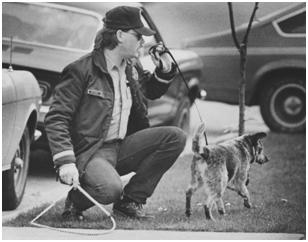Behavior Analysis Analyzed
Gary Wilkes
Arizona State University (Presented as a course handout when I was an associate professor at the Morrison School of Agri-Business at ASU, teaching pre-vet students.)
Within the study of psychology are several sub-disciplines that focus on animal behavior. One of these fields is called behavior analysis. Unlike ethology, the study of how animals behave in their natural habitat, behavior analysis deals primarily with the way behavior is changed by the environment. This field is also called the experimental analysis of behavior. Behavior analysis began in the early 1900’s through the work of scientists such as Edward Thorndike, John Watson and B.F. Skinner. As a foundational cadre they developed terms and concepts to create a discipline that would form a science of behavior. Their original terminology and perspective of behavior analysis has remained the dominant jargon of this and other related fields. When we use terms such as “reinforcement” to describe the strengthening of a behavior, we are using terms coined by those original researchers. Continue reading

 veterinary literature, you will find reports of Bull Terriers who destructively bite their own tails. These dogs are so persistent that they often do enough damage to require removal of the tail. The odd thing about this disorder is that removing the tail may not stop the behavior. Some dogs continue to bite at the place where a tail should be. In veterinary circles, this behavior is considered neurological, in origin. In common terms this type of behavior is usually labeled “nutso”.
veterinary literature, you will find reports of Bull Terriers who destructively bite their own tails. These dogs are so persistent that they often do enough damage to require removal of the tail. The odd thing about this disorder is that removing the tail may not stop the behavior. Some dogs continue to bite at the place where a tail should be. In veterinary circles, this behavior is considered neurological, in origin. In common terms this type of behavior is usually labeled “nutso”.
